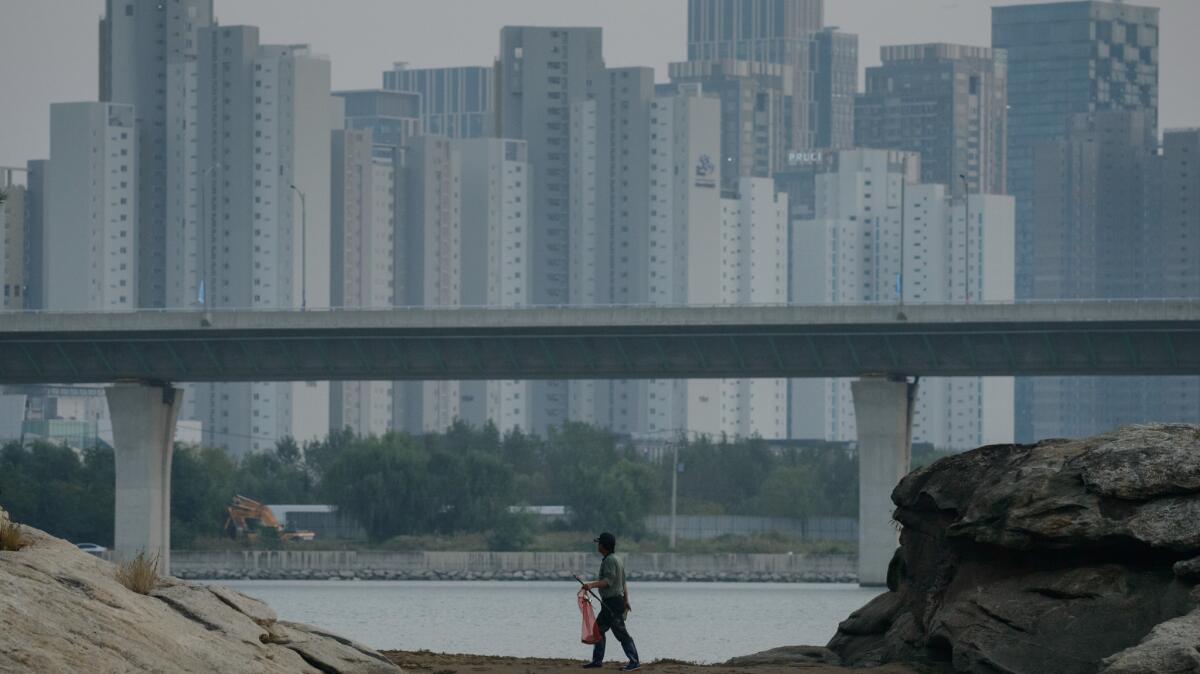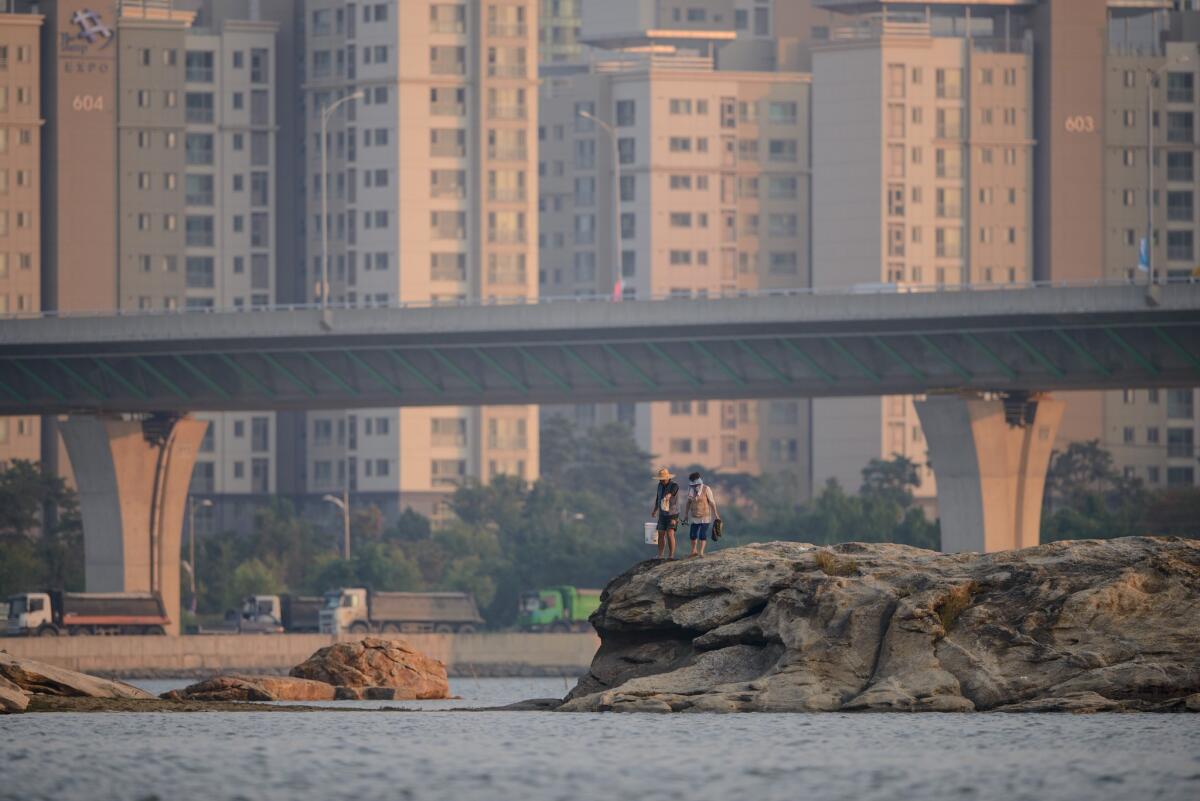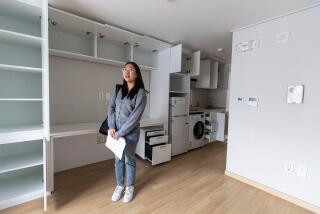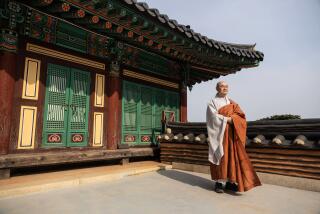Skyscrapers? Check. Parks? Check. People? Still needed.

Reporting from Songdo, South Korea — This city on the Yellow Sea seems to have it all: Gleaming skyscrapers, broad avenues, serene parks and new apartment buildings a short walk from restaurants, shopping, schools and public transportation.
Songdo though is short on at least one thing: people.
A little more than a decade ago, the city didn’t exist. Built on 1,500 acres of reclaimed marshland on South Korea’s west coast, Songdo is billed as an innovation in urban planning — a hub of commerce just 20 minutes from the country’s main airport, Incheon International.
“In a lot of ways, it’s the city Koreans want to show the world, in that it’s a clean, futuristic-looking place with no visible poverty,” said Colin Marshall, a Seoul-based essayist who writes about cities.

A work in progress, the city isn’t scheduled to be completed until at least 2020. But it now has about 100,000 residents, or about half of what it is designed to hold. More significantly, developers say there are just 70,000 daily commuters, well short of the 300,000 they envision. For now, the city feels like a party whose hosts overestimated how many people would show up.
Flawlessly maintained Central Park, where paths for jogging and cycling run alongside a lake, was nearly empty on a recent afternoon. A few young couples with selfie sticks traversed the gravel paths, stopping to take photos against the futuristic background of skyscrapers and construction cranes.
“Living here is good. It’s quiet and clean,” said Jeon Mi-sook, a middle-aged woman out for a walk with three friends.
As Jeon and her friends sat chatting at a picnic table, the screech of buzz saws pierced the afternoon quiet. Salty air gusted in from the nearby sea. Several residents said the proximity to nature was the best part of life in Songdo, which is named for pines that grow in the area.
“If we were in Seoul, a place like this would be so crowded,” Jeon said.
But Songdo’s biggest problem may be that it is too far from the capital, the country’s undisputed economic, political and cultural center. It takes well over an hour by bus or subway to reach most neighborhoods there — too far to commute, but too close to compete.
That has left the city struggling to establish its identity.
For now, many of the residents are college students and staff. George Mason University in Virginia and Ghent University in Belgium have opened campuses here.
Residents also include employees of Samsung, Daewoo and other South Korean companies with local offices. But so far the city has not become the economic center its planners had envisioned.
Han Ji-yeon, a 19-year-old who lives here with her family, said that once she finishes college, she expects she’ll leave for a job in Seoul or another big city.
One big question facing Songdo is whether it can become a thriving urban space without corporate or government funding.
The city began as a public-private partnership. In a country that crams 50 million people into an area smaller than the state of Kentucky, developers viewed Songdo as a business opportunity. Its stakeholders have pumped billions of dollars into design and construction.
Stan Gale, whose New York-based real estate firm Gale International was instrumental in Songdo’s founding, declined to say whether the company has earned a profit on its investment, saying it is too early to declare success or failure.
South Korea has mixed results with other planned cities. Nearby Ilsan has thrived as a green, livable residential city less than an hour’s commute from Seoul. But Sejong, the administrative capital opened in 2012 to ease crowding in Seoul, has become a dreaded post for civil servants, who complain there is little to do on evenings or weekends.
Away from Songdo’s gleaming center, across from the shiny plazas, waist-high grass filled broad vacant lots.
One elderly couple had taken advantage of the gradual pace of development and seized an empty plot of land to farm peanuts and lettuce. The man, wearing black galoshes and a sun hat, was bent over pulling weeds from a plot of sprouting lettuce.
He said he didn’t know who owns the land he was farming on. “This is just temporary,” he said, declining to give his name for fear that his illegal plot might be exposed. “I didn’t see anyone else here, so I thought we could plant something.”
He said life in the city is pleasant: “There are no factories here so the air is clean and it’s quiet.”
In the distance behind him was the bridge to the airport.
Two middle-aged men were hanging a banner advertising an apartment complex on another vacant lot. The sign advertised the number of units available and the square footage, with construction scheduled to start later this year.
After they finished, the men drove off, leaving the banner fluttering in the afternoon breeze.
See the most-read stories this hour >>
ALSO
Mexican soccer star Alan Pulido rescued several hours after abduction
Sexist, maybe? Extra wide, pink parking spots for women in China
The Philippines has 1.8 million abandoned children. Here’s what keeps many from adoption
Borowiec is a special correspondent.
More to Read
Sign up for Essential California
The most important California stories and recommendations in your inbox every morning.
You may occasionally receive promotional content from the Los Angeles Times.










